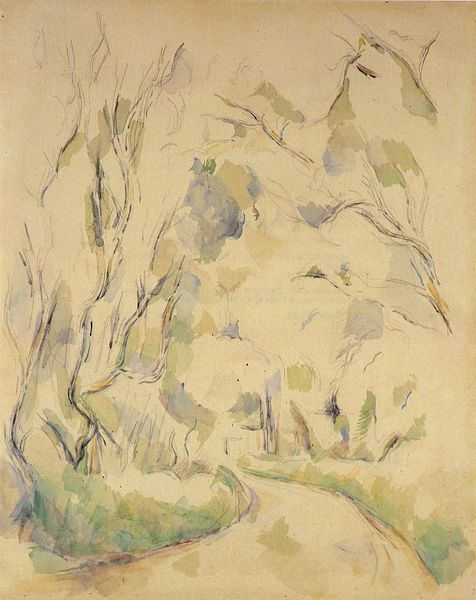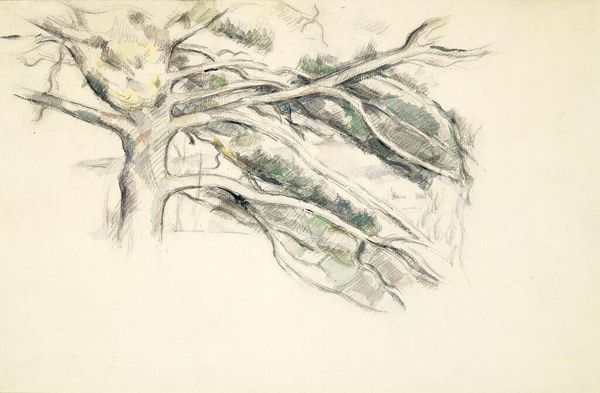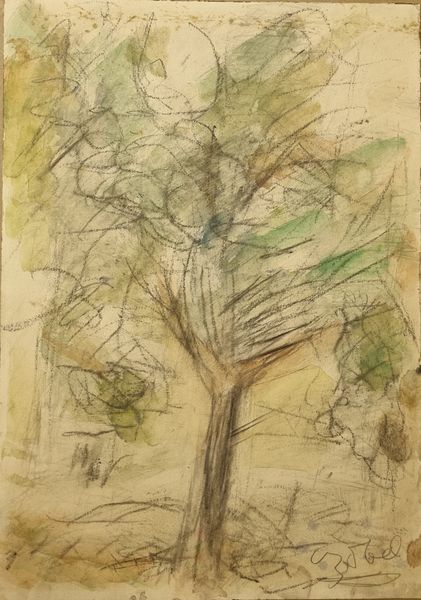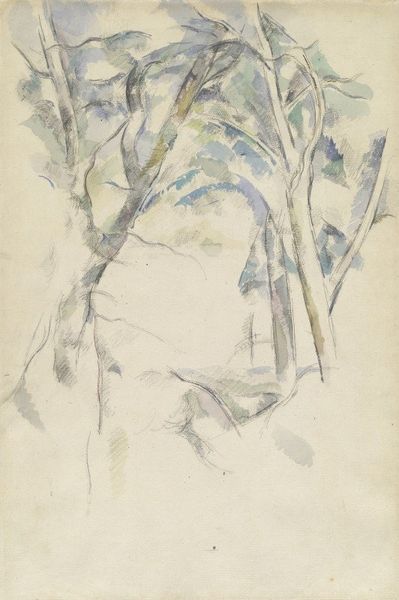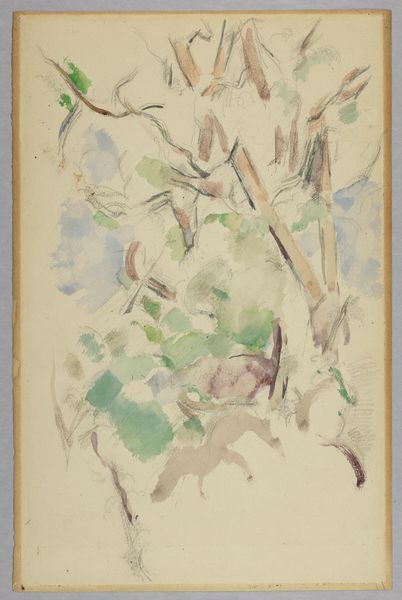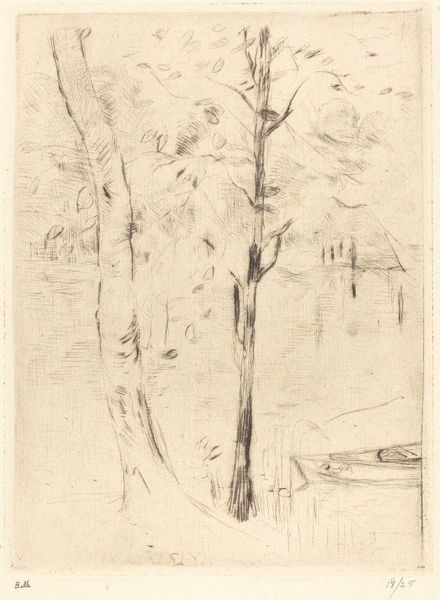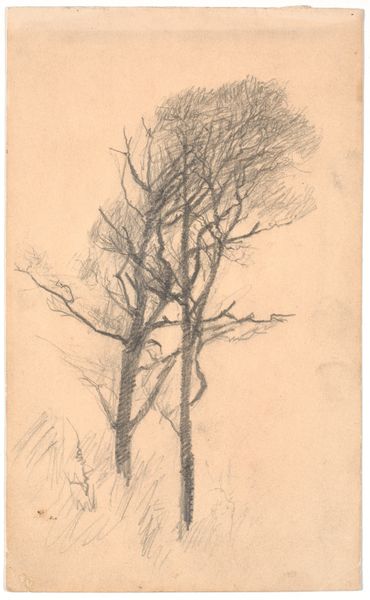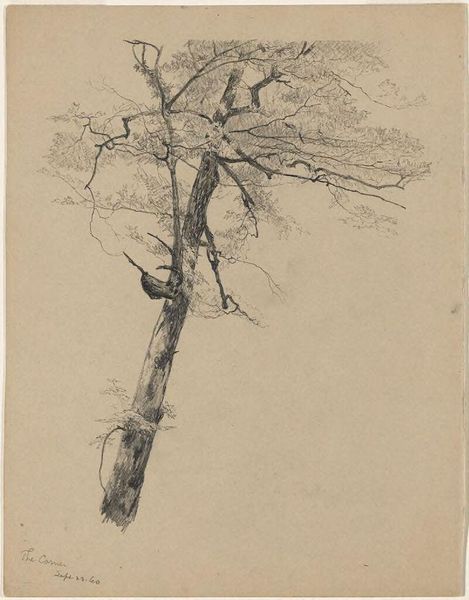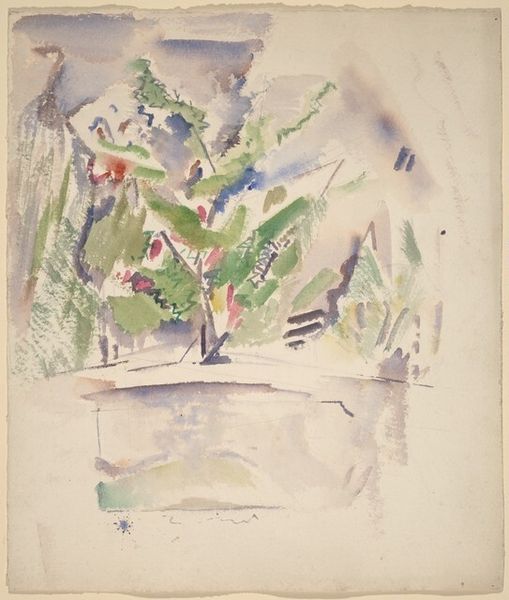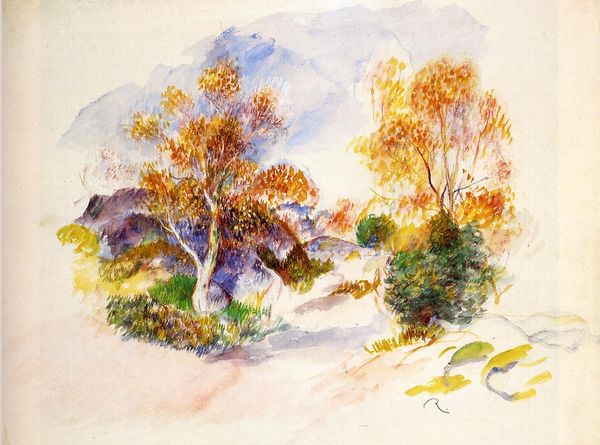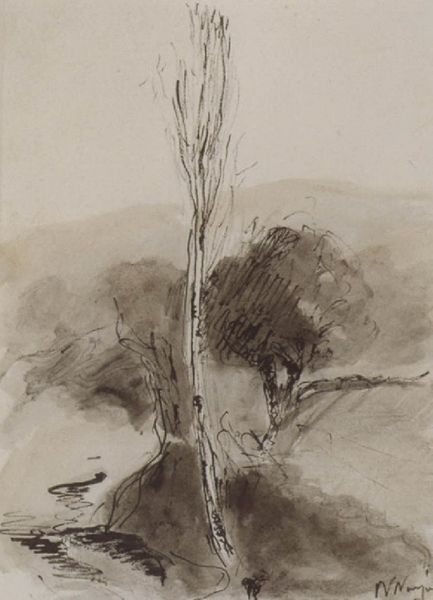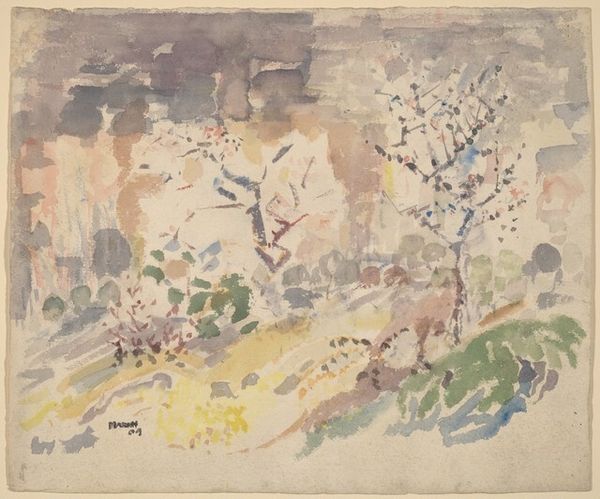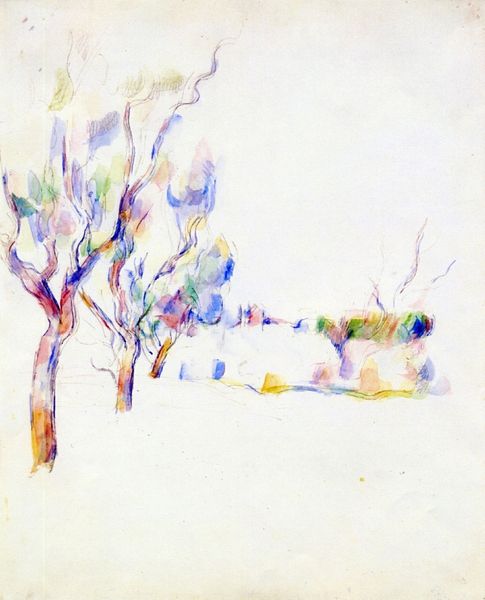
plein-air, watercolor
#
impressionism
#
plein-air
#
landscape
#
oil painting
#
watercolor
Copyright: Public domain
Curator: Before us is "The Oak," a watercolor by Paul Cézanne, created around 1885. It's held in a private collection, a gem we're fortunate to display. Editor: Well, isn't that… sparse? A lonely tree skeleton, almost. But those colours – the pale blues and browns. It feels unfinished, like a memory glimpsed through a rainy window. Curator: Indeed. What grabs me about this little picture is exactly that openness, where Cézanne's process is so very visible. The exposed paper serves as atmosphere itself. Notice how the watercolour seems both carefully applied and utterly spontaneous? It whispers of ‘plein-air’ techniques—he captured something transient, not manufactured. Editor: Ah, 'plein air’ – literally 'open air,' so right there and then – it meant wrestling with nature's actual elements – light, wind, distractions. Were such direct means, then, more of a 'masculine' way to show labor in those late 19th century fields and groves. Does this rough-around-the-edges process undermine or enhance the aesthetic value for viewers then, even now? Curator: Intriguing point! While landscape traditions often smooth and idealize, Cézanne reveals something primal – almost awkward. I feel closer to the artist here, you know, a sense of communion where I observe, not the finished product, but his fleeting dialogue with the wild of the tree itself. He reduces and refracts – much like memory. The materiality makes it all the more vivid and more "real." Editor: Precisely – even to use watercolour in "open air" meant grappling with the wind ruffling and scattering pigment while demanding quick gestures: it's fascinating that so much labor went into seeming near transparency. Does this mean the perceived 'preciousness' or ‘prestige’ of finished artwork hides how physically active, unglamorous and risky their creation would've really been? Curator: What resonates is precisely his honesty to the material and location, in both medium and execution. Its open style invites you to enter in the scene – feel that same moment’s breeze or sun. It's almost like collaborating with Cézanne to complete what the open ended processes initiated. Editor: Thanks. Seeing this landscape's labour this way gives it such substance and invites contemplation over mere passive reception.
Comments
No comments
Be the first to comment and join the conversation on the ultimate creative platform.

